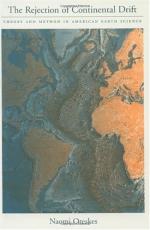|
This section contains 582 words (approx. 2 pages at 300 words per page) |

|
Early scientists never seriously questioned the stability of the earth's continents until 1620, when the famous philosopher Sir Francis Bacon (1561-1626) pointed out that the Atlantic coastlines of South America and Africa, if brought together, appeared to be a compatible fit. Likewise, the French naturalist Georges de Buffon suggested in 1750 that North America and Europe had once been joined because of the similarities of their present plants and animals.
For the next 300 years, scientists noticed other similarities between coastlines and fossil remains and attributed the similarities to a narrow land bridge that spanned the distance between the continents. It was thought that the land bridges had since subsided beneath the surface of the sea. It wasn't until the early 1900s when Alfred Lothar Wegener, a German geologist and climatologist, proposed a bold explanation for this phenomenon. In his 1915 book The Origin of Continents and Oceans, Wegener asserted...
|
This section contains 582 words (approx. 2 pages at 300 words per page) |

|


